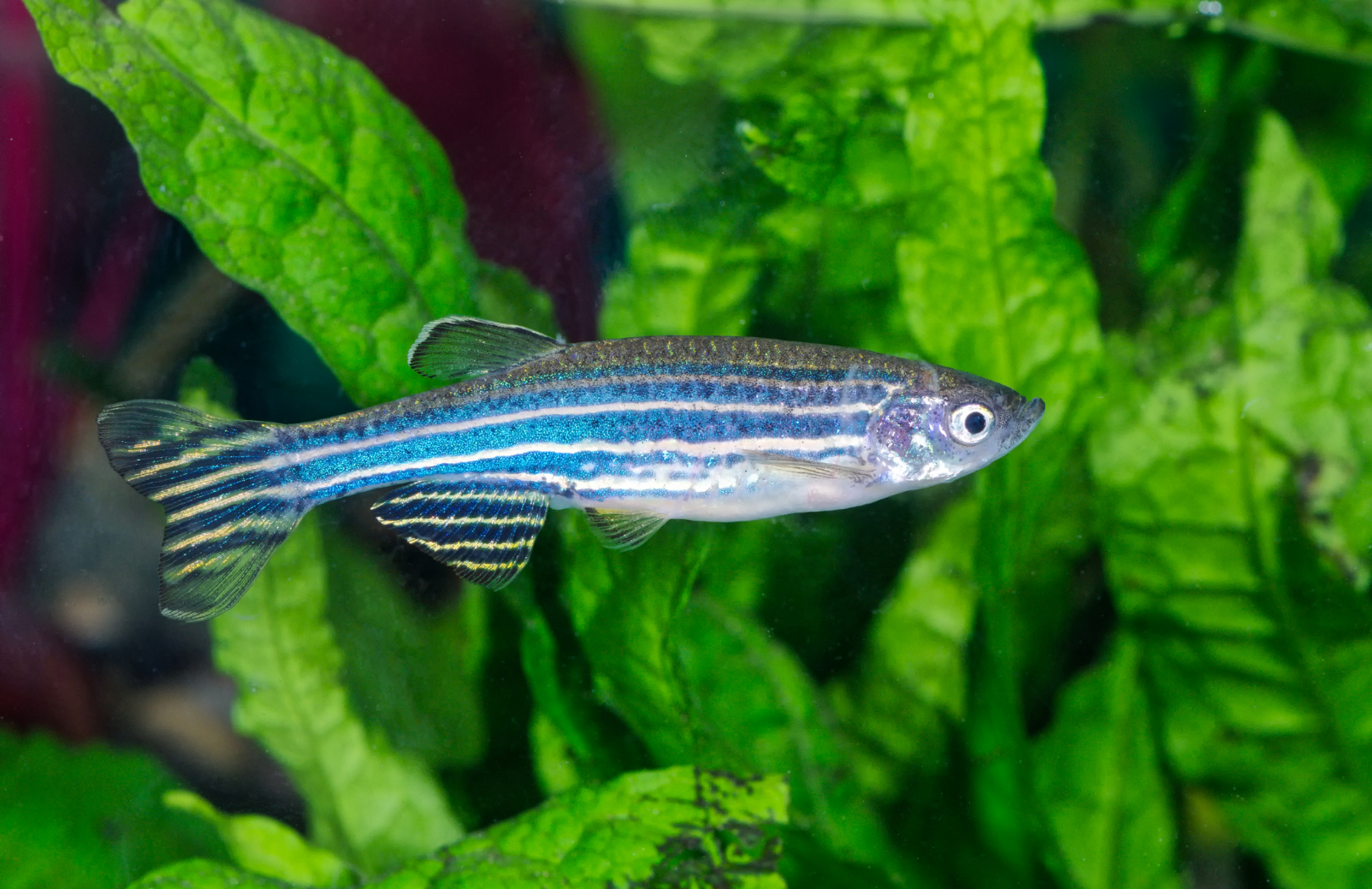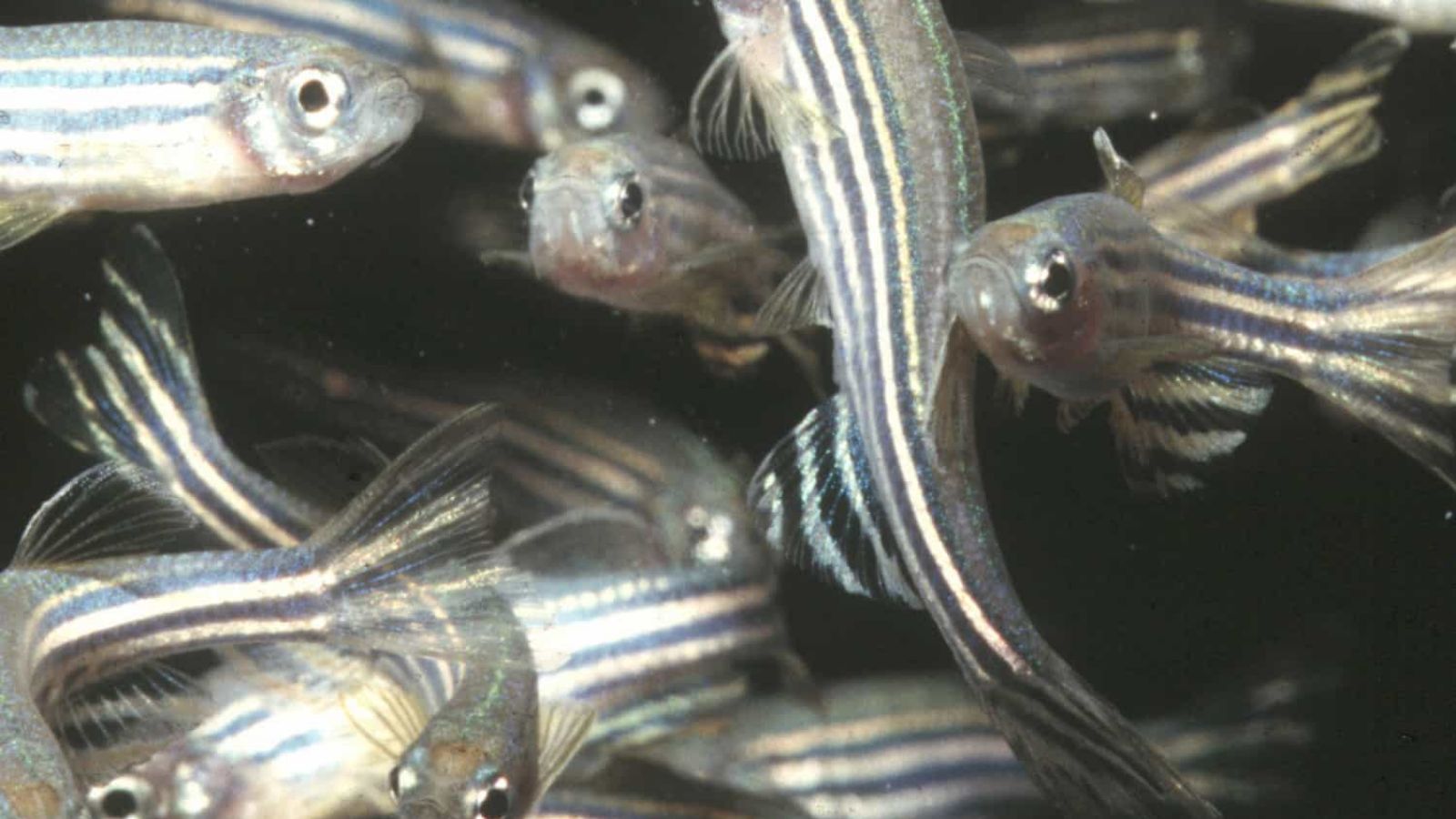 Zebrafish are small freshwater fish that grow 4-5cm long and live for approximately 2 years. Native to the Himalayan Region, zebrafish are naturally found in shoals (groups) in shallow ponds and standing waters.
Zebrafish are small freshwater fish that grow 4-5cm long and live for approximately 2 years. Native to the Himalayan Region, zebrafish are naturally found in shoals (groups) in shallow ponds and standing waters.
Zebrafish are the second most used animal in medical research. The use of zebrafish has increased considerably in the last ten years, replacing the use of rats in many cases. The zebrafish genome-sequencing project was initiated at the Wellcome Trust Sanger Institute in 2001 and was found to contain 84% of genes known to be associated with diseases in humans. This has allowed fish to be used to study human genetic disorders and diseases in greater detail.
It is also possible to genetically modify zebrafish, allowing even more accurate study. In many cases genetically modifying an animal involves removing or inserting a gene and observing the effects to identify the function of the gene. Once a gene has been identified as linked to a specific disease, zebrafish can be genetically modified to create an animal model of the disease, which scientists can use to test new treatments.
Why are zebrafish used in research?
Zebrafish are used in scientific research for many reasons. Firstly, we share many genetic similarities with zebrafish which makes them ideal for researching genetic diseases. Secondly, zebrafish are small, robust fish that have short lives and reproduce quickly. A quick lifespan is a big plus when it comes to scientific research because we want to be able to create new medicines and learn about disease as quickly as possible, so that we can save lives. Studying the effect of a disease or drug over a lifetime in a human is almost impossible, it would take at least 60 years. However, we can study the lifetime effect of a disease in a zebrafish in just a few short years. The zebrafishes fast reproductive cycle also means that there is never a shortage of fish for science.
A unique reason zebrafish are such popular research animals is because of their “transparent” embryos. When zebrafish lay their eggs, they are almost see-through, which means scientists can observe their development without disturbing the maturing embryo. This has given us the opportunity to learn a great deal about early-stage development in embryos that are applicable to humans and many other animals.
What types of research are zebrafish used in?
As the second most used animal in research, it is apparent that zebrafish can be used to research many different areas of human and animal health. These versatile fish are particularly useful for studying early-stage development because they lay transparent eggs outside of the body, allowing scientists to study the embryos development without using invasive methods.
Zebrafish also possess a very special ability; they can repair damaged heart muscle after various types of heart injury. Zebrafish are one of the most important animal models for developmental and regenerative biology of the heart, because of their ability to regenerate cardiomyocyctes. For this reason, scientists are trying to identify the specific molecules that are responsible for this remarkable ability and hope that one day we may be able to mend our own “broken hearts”.
Zebrafish are also used in cancer research, particularly skin cancer which they can develop naturally.
In some cases, the use of zebrafish is seen as a 3R’s replacement. Animal research regulations state that you must use the “least sentient animal capable of providing meaningful insight” for your research projects. Therefore, some types of studies that historically used mice or rats are now carried out in fish, as they are considered less sentient than these often-used rodents. In part, it is because of this method of replacement that fish have become such popular research animals in the last decade.
How are the fish looked after?
The use of animals in research is highly regulated, an important part of that regulation is ensuring the animals are housed and cared for correctly. In the laboratory, zebrafish are housed in groups unless isolation is required for specific study or for quarantine purposes. Zebrafish are housed in large aquatic systems with many small tanks (as seen in the image below). The fish tanks are attached to a large filtration system that is usually so big it requires its own room! In most laboratories, zebrafish are fed live foods (small freshwater organisms) as these are considered the healthiest and most natural form of food that can be provided.
Whilst it is not stated in the regulations, it is considered good practice to provide zebrafish with environmental enrichment in the form of live or fake plants and rocks.

See www.AnimalResearch.info on fish and zebrafish. RSPCA has issued guidance on the housing and care of zebrafishand Fish for Science is an excellent university website for anything on research using zebrafish.
View this post on Instagram
Breeding Zebrafish for medical research from Understanding Animal Research on Vimeo.
Breeding Zebrafish for medical research from Understanding Animal Research on Vimeo.




